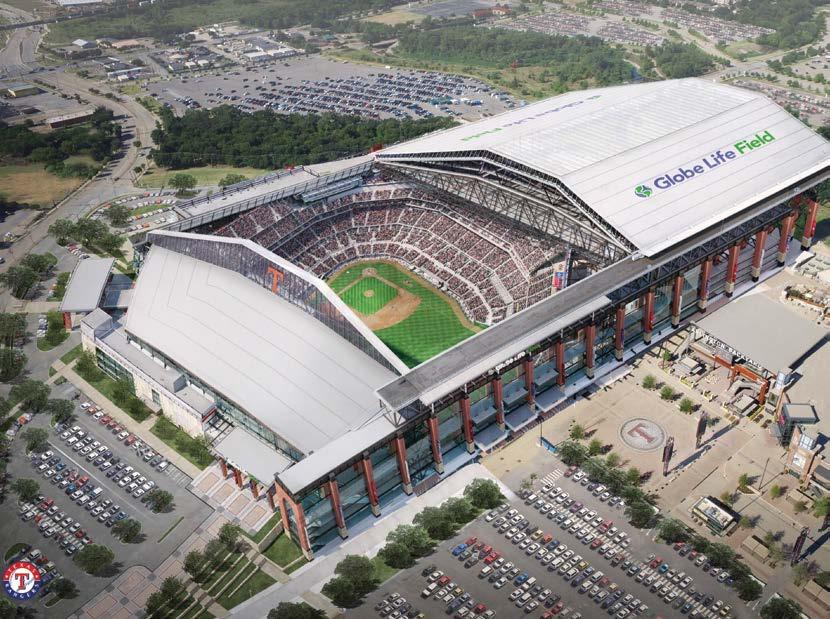
9 minute read
Case Study: Enerpac Stadium Roof
In Sync
Enerpac ‘SyncHoist’ synchronous lifting technologies play a critical role in sliding roof construction for major stadiums
Advertisement
With an ever-increasing number of major outdoor stadium owners and operators around the world looking to incorporate sliding roof solutions into their facilities to combat the issues associated with climate change, one of the major challenges being faced by project engineers is finding a reliable method of lifting the massive roof components into position – safely, efficiently and with an extraordinary level of precision.
Increasingly severe weather changes including heatwaves and downpours are presenting challenges to designers and specifiers of sporting and mass entertainment stadia. These seasonal and climate change issues that may be faced in the future by these massive buildings was illustrated over the past year by the bushfires in Australia that had burnt through 10 million hectares by January, sending plumes of smoke across the Tasman to New Zealand and then around the world. Similarly, forest fires in Sumatra and Kalimantan, meanwhile, sent toxic haze across South-East Asia, aggravating respiratory illnesses and forcing the closure of schools, airports and entertainment events.
The unusual weather associated with such events – ranging from electrical storms, to exhausting record temperatures exceeding 45°C in many parts of Australia – pose an ongoing issue for such stadia, the largest of which can each accommodate 100,000 spectators and athletes. The top 20 such stadia in Australasia and the Asia-Pacific collectively accommodate more than a million people.
STADIUM ROOFS CREATE HEALTHIER SPORTING ENVIRONMENTS
One solution to coping with climate change being considered and implemented globally by architects and engineers is the construction and/or retrofitting of opening stadium roofs that can respond rapidly to changing ambient conditions - protect the health and comfort of occupants, while at the same time safeguarding the financial and operational viability of stadia that can cost hundreds of millions of dollars to build.
But such projects can involve a daunting scale of the construction and special lifting needs, including the precision positioning of components forming unusually long steel beams used in the construction of sliding roofs that can weigh 10,000 tonnes and more. Not only do these beam components need to be placed safely and precisely from considerable heights, but the operation must also be completed in as stable and as rapid a way as possible to protect construction scheduling, workers and the structure itself against the vagaries of weather conditions arising during the task.
MAJOR STADIUM ROOFING SUCCESS STORY
One solution to this delicate construction task was employed recently in a landmark stadium
construction project, the Texas Rangers Globe Life sports stadium in the US, designed by HKS architects and built by Manhattan Construction Group.

Left: The Globe Life Stadium employed Enerpac SyncHoist technology during the construction of its massive retractable roof. Image courtesy: Manhattan Construction / HKS Architects
Bottom: The Texas Rangers Globe Life Stadium under construction. Image courtesy: Manhattan Construction
When completed, the new home of the Texas Rangers baseball team will include a retractable roof for climate control during the hot summer months. The roof will operate on a mechanism much like a train on a railroad track.
This project used Enerpac’s internationally proven SyncHoist system to permit PLCcontrolled vertical and horizontal load manoeuvring using one crane while placing essential elements of the 5.5-acre (2.25 ha) roof.
Such synchronous lifting technology – the family of which has already been proven on Australasian and SE Asian projects – was used in the Texas Rangers project during the delicate positioning of components of structural steel spans more than 180 metres long in the retractable roof of the new 167,000m² structure. One of the priorities in this job was to complete the task as rapidly and possible within a limited window of opportunity, while eliminating the risk of damage from oscillations of wire rope caused by sudden crane stop/starts, says Enerpac Asia-Pacific Marketing Manager, Mr Antony Cooper.
Because it was not feasible to use one crane to lift such long members, it was constructed in segments that were lifted into place one at a time using the specialized hydraulic system from Enerpac. The SyncHoist system allowed the trusses to be assembled on the ground and then hydraulically lifted and put into place with one crane, instead of building them up in the air. To prepare for the roof installation, Manhattan Construction workers built temporary supports to hold the installed pieces in place until the entire span was connected and could support itself.
UNIQUE SAFETY REQUIREMENTS
The process was not without challenges, especially the need for limiting construction work below while the roof trusses were moved. Closely controlled scheduling was required to provide space and clearance so crane operators could put the spans in place on one side of the stadium while construction activity below progressed on the other side. A priority was placed on addressing the unique safety considerations of the process, including training workers about safety precautions while working with heights in, around and below activity.
The movable nature of the roof also made it much more complicated and heavier than a fixed roof, Enerpac Product Line Director of Heavy Lifting, Pete Crisci, said.
Several SyncHoist features helped smooth installation. The system’s wireless
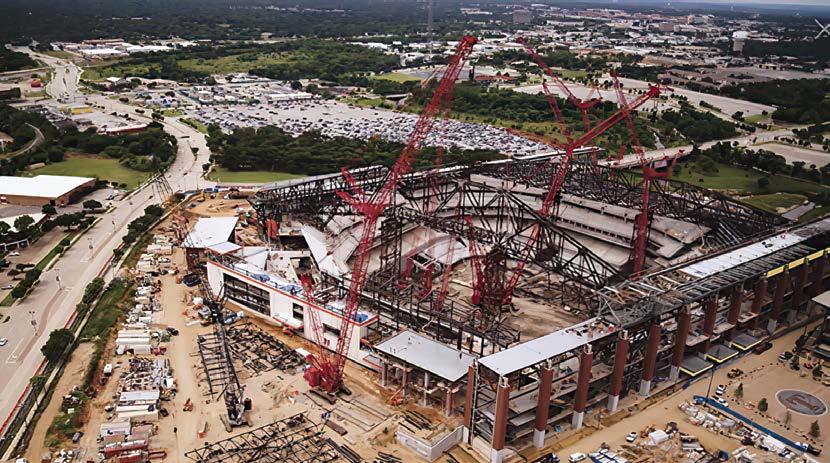
communication allowed Enerpac engineers to control pieces of steel more than 60 metres in the air and position them down with millimetreprecision using an iPad-like control screen on the ground.
Mr Crisci said such modular roofing trusses could in general generate cost savings by requiring less equipment, crews and time. “From a speed and efficiency standpoint,” he said, "we can do the work much more quickly and safely.”
Ground-level modular roof construction is ideal for extremely large, complex projects like bridges, power plants and ship building factories, Mr Crisci said.
“One of the things you’re seeing in stadium trends these days, is that they are getting much bigger and more elaborate, so the designs are quite complex. This means that traditional construction methods of erecting individual roof components in the air isn’t really the best way to do it anymore, given the sheer size of the large roof trusses on these stadiums.”
In use across the world for 15 years, the SyncHoist system was also used to install the roofs of the Atlanta Falcons’ Mercedes Benz Stadium, the “Bird’s Nest” Olympic stadium in Beijing, China, and for the renovation of the San Francisco-Oakland Bay Bridge.
In Australasia, Enerpac synchronous lifting technologies have been used in applications as diverse as hoisting and positioning entire prefabricated shipping components, mining mills and oil processing platforms.
Below: One of the 33 Steel truss sections used in the roof, each weighing up to 680,000kg (1.5 million pounds). The SyncHoist technology involved is suitable for construction of roofs responding to trends such as crowd protection, either from the elements, unique designer roofs, the use of sports venues as entertainment districts and the trend towards bigger, more modular facilities. Image courtesy: Manhattan Construction
Above: (LEFT) Enerpac SyncHoist technology has also been employed in Australian naval construction for precision positioning of major components. (RIGHT) Enerpac SyncHoist utilises four lifting and control points suspended from one crane.
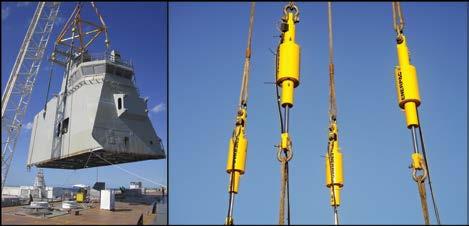
ENERPAC’S SYNCHOIST SYSTEM Enerpac’s Synchronous Hoist System (SyncHoist) is a below-the-hook sling adjuster (hydraulic turnbuckle) which typically includes multiple specialised hydraulic cylinders mounted directly in-line with the rigging. This provides the operator the freedom to precisely monitor and adjust each lifting point independently.
Most importantly, the system enables a single crane to precisely position heavy and unbalanced loads.
Offering accuracies of plus/minus one millimetre over cylinder strokes of up to 1500mm, the SyncHoist differs from standard Synchronous lifting systems in that it generates pull forces while suspended from a crane above the load, rather than generating push forces from underneath.
Typical SyncHoist functions include high precision load positioning; pre-programmed positioning, tilting and aligning; and counterweighting to determine centres of gravity. Enerpac’s SyncHoist technology is ideally suited to a wide range of applications, including: • Positioning of roof sections, concrete elements, steel structures • Positioning of turbines, transformers, fuel rods • Precise machinery loading, mill rod changes, bearing changes • Precise positioning of pipelines and blowout valves • Positioning and aligning of ship segments prior to assembly
Benefits of the system include vastly improved operating and positioning speed and worker safety, says Mr Cooper. “It means also that weather conditions play a less critical role.”
“Intelligent hydraulics such as SyncHoist can turn conventional lifting systems into high accuracy hoisting and load positioning systems. SyncHoist and Synchronous Lifting can produce measurable cost reductions and safety benefits when compared with conventional lifting systems,” Mr Cooper added.
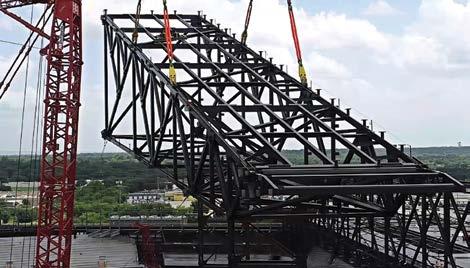
ABOUT ENERPAC
Enerpac is a global market leader in high pressure hydraulic tools, controlled force products, portable machining, on-site services and solutions for precise positioning of heavy loads. As a leading innovator with a 110-year legacy, Enerpac has helped move and maintain some of the largest structures on earth. When safety and precision matters, elite professionals in industries such as aerospace, infrastructure, manufacturing, mining, oil & gas and power generation rely on Enerpac for quality tools, services and solutions. For more information visit: www.enerpac.com
Be Inspired... with abilox ®
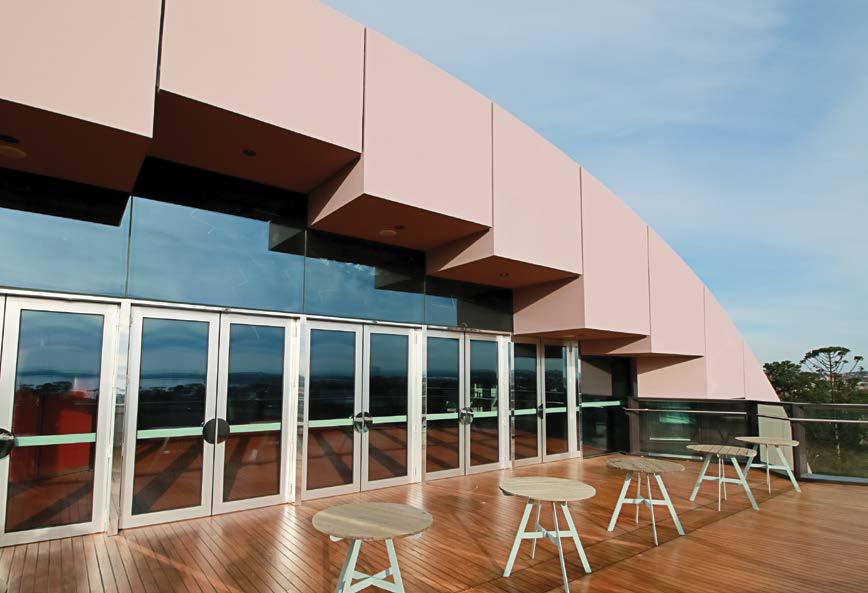



Why have plain, drab and uninspiring uncoloured concrete, asphalt and mortars, when you can take your project to the next level with high quality abilox® UV resistant mineral oxide powder pigments from Ability Building Colours?


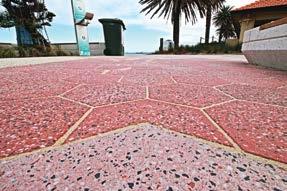
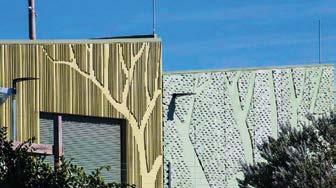

Available in a choice of over 70 standard colours OR in your own custom colour, abilox® is ideal for use in premixed concrete, asphalt, mortars, paints, surface coatings, caulks, sealants, applied finishes and a range of other construction products - delivering extremely high quality, consistent, reliable and permanent colours that won't fade or degrade.

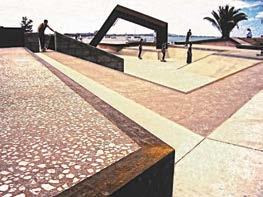


Call us today on: 1800 337 324 (Toll Free) Postal address: PO BOX 391 West Heidelberg Victoria 3081 P: 03 9457 6488 F: 03 9458 4683 E: service@abilityproducts.com.au www.abilityproducts.com.au Ability Building Colours 133-135 Northern Road West Heidelberg Victoria 3081










